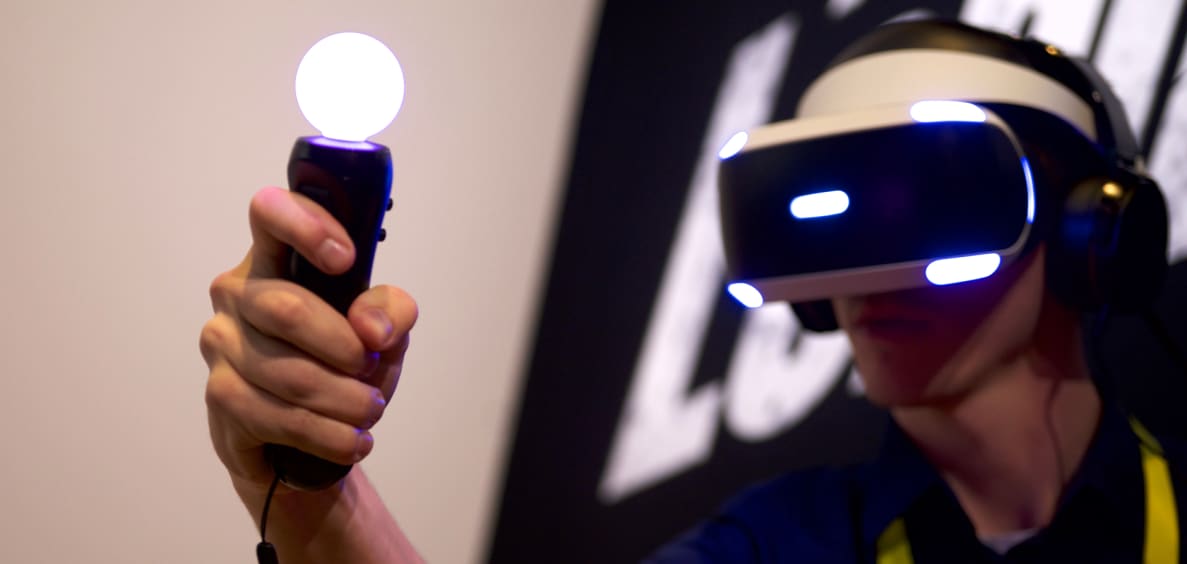We had a chance to check out three headliners for virtual reality at last month's CES 2016, and have spent time with some of the more affordable low-end models elsewhere. Whether you're just toying with the idea of VR or have already decided to spend some of your hard-earned cash, we'll break down everything you need to know to pick the right headset for you.
Oculus Rift
Pioneering a new way to play
What started as a Kickstarter-backed idea in 2012 has since grown to be the most recognizable name in virtual reality. The brainchild of tech industry wunderkind Palmer Luckey, the Oculus Rift quickly set the standard and opened the world's eyes to the possibilities of VR games and more. With several development kits released into the public, a high-profile acquisition by Facebook, and partnerships with Microsoft and Samsung, the Rift is at long last ready to actually go on sale.
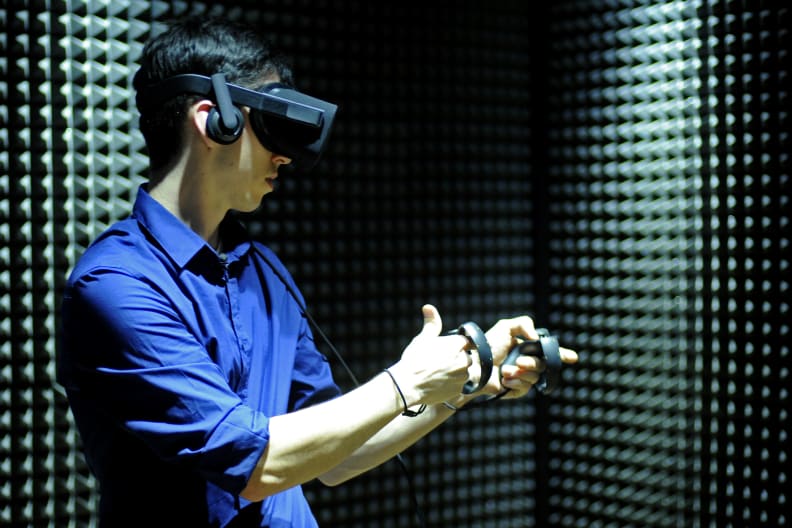
With built in headphones on the headset and motion controllers, the Oculus Rift is the whole package for VR.
Pre-orders for the Rift launched on January 6th, and it'll cost you a cool $599 to reserve your unit. The first wave of orders will start shipping in April, but if you order one from Oculus today you'll probably get it in July. If you don't want to wait that long, and the device will be available in bundles from select retailers (like Best Buy) in April.
The Experience
Even more than the PlayStation VR, the production Oculus Rift feels like a consumer-ready product. It's light, comfortable, and refined in ways that the other headsets haven't been able to match. This is a product that's ready to hit mainstream and take it by storm.
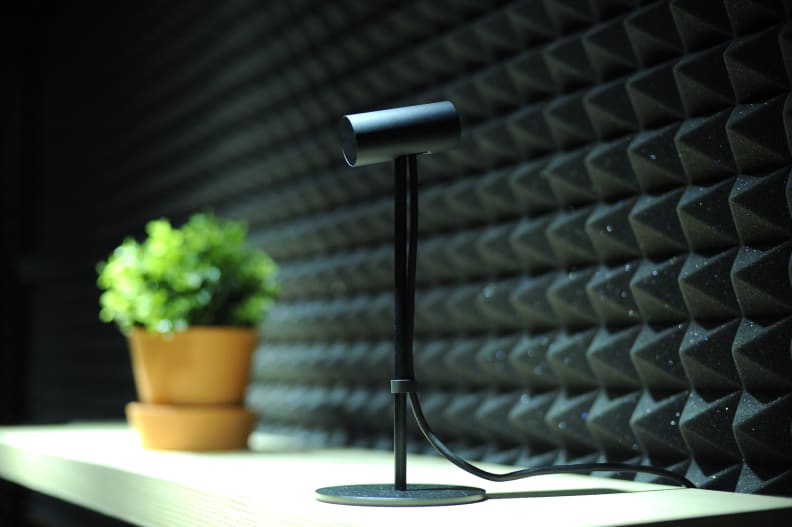
The tracking system is designed to track your movements whether you're sitting or standing.
It only took a moment to adjust the headset to my eyes for a clear picture using the diopter. Taking the Touch Controllers in hand, while different than any other controls I'd tried before, felt totally natural.
Device Info
So what exactly do you get for your $600? Well, you can expect the VR headset with built-in headphones and mic, the sensor, a remote to navigate in VR, all of the necessary cables, an Xbox One controller, and two games: EVE: Valkyrie and Lucky's Tale.
Unfortunately, the Oculus Touch controllers—crucial for the most immersive experience—aren't included in the initial pre-order and will cost an undisclosed additional amount when they're finally released sometime in the second half of 2016.
{{brightcove '3457915359001'}}
Not so fast, though. Aside from this base package, you'll also need a Windows PC rocking the specs necessary to support the hardware and software. Manufacturers including Alienware, Dell, and Asus have already launched "Oculus Ready PCs" that meet all the requirements for a smooth VR experience. If you're more of a DIYer when it comes to PC builds, here's the information you seek:
MINIMUM TECH SPECS: • Windows 7, 64-bit or newer • Intel i5-450 • NVIDIA GTX970 / AMD R9-290 • 8GB RAM • HDMI 1.3 video output • 3x USB 3.0, 1x USB 2.0
If your computer stacks up, or you plan to buy one of the Oculus Ready PCs, then you can head over to the Rift website and pre-order yours today.
HTC Vive Pre
Setting the standard
Of the VR headsets I've tried, the Vive Pre is undoubtedly my favorite. The freedom of a dedicated play space, the chaperone system, and a graphics prowess that rivals the Rift is a potent recipe for success.
But there are downsides, of course: The Vive Pre needs an an entire empty room to serve as a VR play area, and, like the Rift, the hardware needed to support the headset will cost you.
While it might be a step ahead of its time, the Vive Pre already has a flag firmly planted in the future. If HTC plays its cards right, it won't be long until everyone else is racing to catch up.
{{brightcove '4693384019001'}}
The Experience
The Vive Pre takes a step beyond what other companies are attempting with virtual reality. Literally. Unlike the other units, the Vive pre uses sensors mounted to the walls of your room in order to create a virtual play space. The upside is greater freedom of movement, but the downside is that you need a large, empty space to dedicate to VR—or you can resign yourself to moving furniture every time you want to plug in.
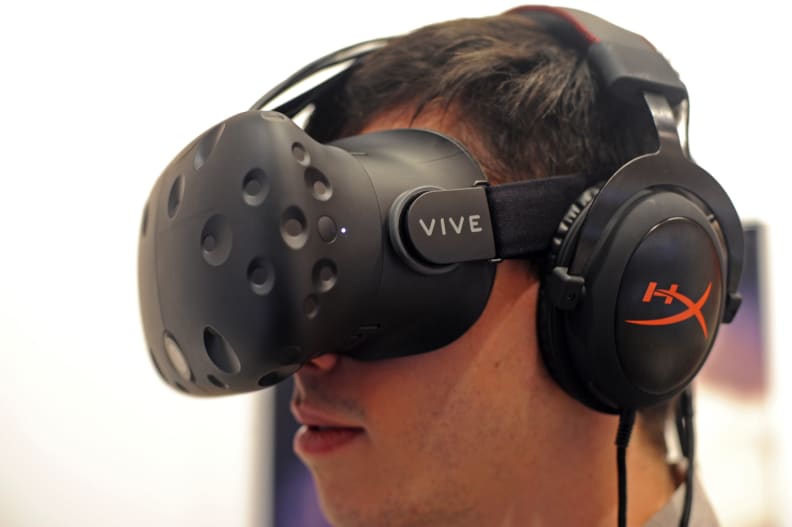
The sensors and camera built into the front of the headset help create a detailed render of the environment for the chaperone system.
Once you boot it up, you'll see a level of detail that's on par with the Rift and other high-end systems. And it's not just the display that impresses. I was blown away by HTC's Chaperone System, a nifty bit of software that keeps you grounded in reality even while flying deep into space or exploring the depths of the ocean.
Approach the edge of the play space and a cyan blue grid will appear in front of you, notifying you that you're about to leave the range of the sensors and whatever experience you're engaged in. A simple half-step back will put you right back into the play zone and ready to continue the illusion. Remember the Starship Enterprise's holodeck? It's a bit like that.
A simple double tap of the controller's home button turns on the true Chaperone System, which reveals the rest of your environment—even beyond the play space—rendered in that same cyan. Not only could I easily find and locate a chair to sit in, but I could make out the details of people walking by, and even spot a friend of mine across the room, all without removing the headset.
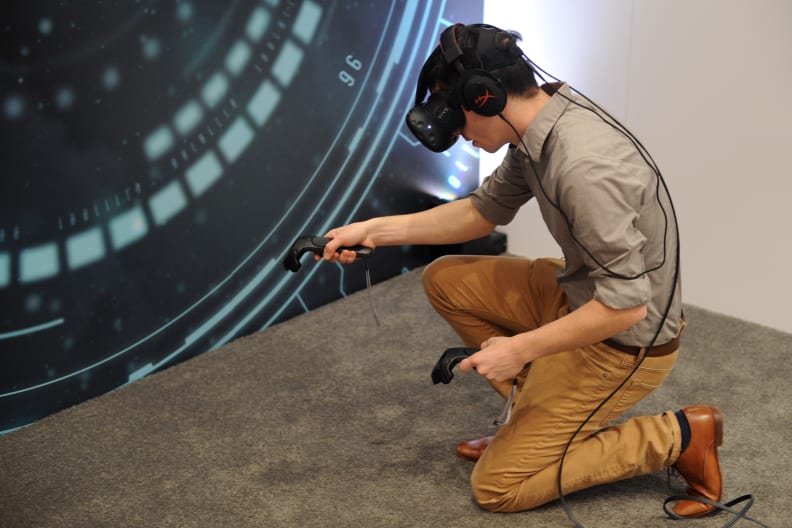
Developers can use the entire play space—from top to bottom—to create interactions for you and the game.
The Device
Since it's not quite ready for widespread release, the exact details of the production Vive Pre and the minimum PC specs necessary to support it haven't been finalized yet. We only know a bit about the tech inside the unit, and it's all subject to change before the projected launch later this year.
The headset doesn't have built-in headphones, but it does have a series of sensors and even a front-mounted camera. (See those dimples on the headset in the photos?) Both of those features are used for head tracking, as well as the Chaperone System.
The display uses the same OLED screen as the Rift, so you can expect a similar level of picture quality. But, unlike the Rift, you'll get a fuller picture with the Vive Pre, since the field of view extends a little higher and wider.
At CES 2016, the Vive Pre still very clearly felt like a work in progress. It's a little unwieldy and heavy on your face, and the design could be more refined. But with that said, both concerns will almost certainly be smoothed out by release.
PlayStation VR
The consumer-friendly high-end option
VR is going to be a tough sell for a lot of people. Not only are the headsets themselves going to be expensive, but the PCs needed to run them will cost at least a thousand bucks, and that's just to meet the minimum specs.
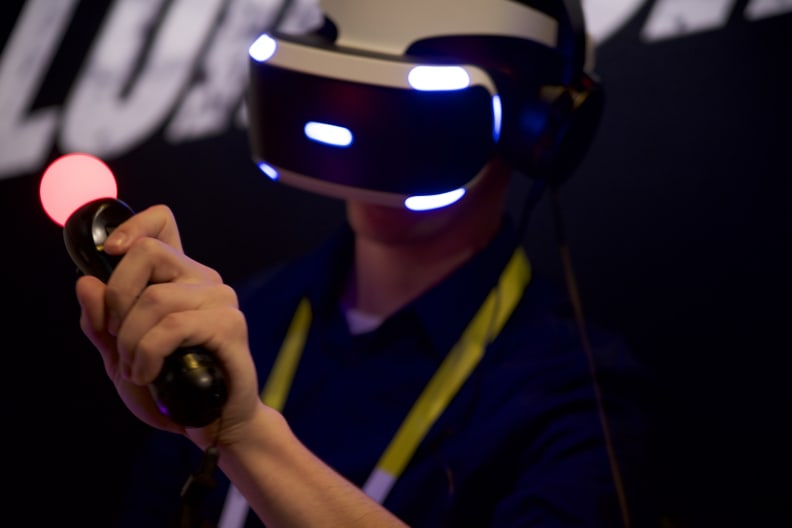
A simple trigger on the back of the controller handles a lot of basic action, like grasping objects or firing a gun.
The exception is Sony's PlayStation VR. While the price of the headset hasn't been announced, all you'll need to run it is a PlayStation 4. With millions of units already sold, that means there are just as many households already prepared for high-end VR. The only question is whether Sony can deliver the goods.
The Experience
It only took me a moment to get strapped into the headset, find a comfortable fit, and adjust the diopter to get a clear picture. Once I slipped on a pair of over-ear headphones, the rest of the world faded away and I was presented with a new experience.
As with the HTC Vive, the motion controllers are incredibly intuitive to use; it wasn't long before I disappeared into the demo. Like other VR experiences, I lost track of where I actually was and became fully immersed. I opened doors, reloaded guns, and handled various objects without ever thinking about the fact that I was holding a remote and pressing a trigger button.
Depending on what kind of demo you're playing, Sony's VR experience might encourage you to remain seated, or stand and interact with things in your immediate vicinity. You might crouch low for better cover, or reach to the side to gather materials for a mission. While I just tried a single demo for the PS4 VR, it won't be the only experience Sony will be offering at or near launch.
Sony CEO Kaz Hirai has stated that there are "about 100 or more" VR games in development, and at CES 2016 he confirmed at least 200 developers are currently working on games. With the full might of Sony behind it, PlayStation VR is certainly in one of the best positions to deliver a wide range of content.
The Device
Just like the Vive Pre, the PlayStation VR isn't a consumer-ready product. The design is most likely in the final stages, but everything—including the internal hardware—could still change before we see it hit store shelves in the latter half of 2016.
{{amazon name="Playstation Move Motion Controller", asin="B002I0J51U", align="right"}}
Undoubtedly the sleekest of the VR headsets, there's something about the PlayStation VR that seems (like the idea of VR itself) ripped from the pages of a sci-fi magazine. The sleek lines, the smooth white plastic, and the glowing lights certainly don't hurt. I also found it to be the most comfortable to wear, thanks to generous padding that created a snug and balanced fit.
There have been reports that in order to work with your PS4, the headset will require a dedicated external processing box to handle the VR graphics and other functionality it's capable of. Even so, integration with the PlayStation 4 is likely going to pay off for Sony in the VR arms race. I don't know about you, but I can already picture the holiday bundles come December.
Samsung Gear VR
Affordable and functional
Of all of the VR headsets I've tried out, the Samsung Gear VR is the only one you can go out, buy, and bring home with you today. But there's a key difference: Instead of functioning as a standalone unit, the Gear VR is powered by select Samsung smartphones.
With an MSRP of just $99.99, the Gear VR is the perfect way to get a sense of what virtual reality is like without taking a big divot out of your checking account. As long as you're willing to make a few compromises, that is.
The Experience
There's no getting around the fact that this is VR running off of your phone. Content is still immersive, to a degree, but the flaws become apparent after just a small amount of time with the device.
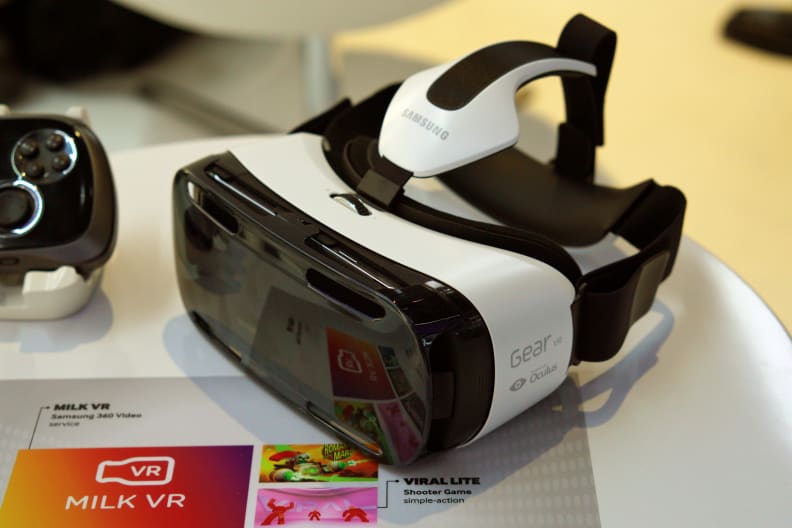
Samsung is using the Milk platform for plenty of content needs, including video and games.
The resolution of the Galaxy S6 and Note 5 screens, while impressive, isn't quite up to the same standard as a dedicated unit. After only a short amount of time, my eyes started to feel the strain of staring at the screen at such a short distance, and if you try to glance into your peripheral vision, the illusion is shattered as the lenses built inside of the Gear VR struggle to compensate.
Luckily, Samsung has packed enough features into the Gear VR to make it worthwhile for plenty of users. Oculus Video, Vimeo, and Netflix all allow you to watch movies and TV shows in a new way, putting you inside a virtual movie theater or a living room to watch your favorite content. You'll also be able to play a variety of games (like Temple Run), experience concerts like never before, and even take flyover tours of scenic locations (like a volcano in Hawaii).
The Device
{{amazon name="Samsung Gear VR - Virtual Reality Headset", asin="B016OFYGXQ", align="right"}} The Gear headset is really little more than a plastic shell designed to house a Samsung phone—namely the Galaxy Note 5, Galaxy S6 edge+, Galaxy S6 edge, or vanilla Galaxy S6. Start running an app on your phone, pop it into the housing, and you've got what can be best described as serviceable VR.
Adjusting the straps is easy, and finding the right fit for your noggin only takes a few seconds. When it's done properly you'll really have to shake your head a lot for it bounce around or get dislodged. The unit itself is lightweight and fairly well balanced, and should be easy to wear for an afternoon of virtual experiences.
While it's definitely not the cream of the crop, the Samsung Gear VR does its job well enough to give anyone a decent sense of what virtual reality is like. It could be the gateway drug for a lot of users.
Related Video
{{brightcove '4693497756001'}}
Meet the tester
Coming from Buffalo, NY, Nick studied media production and arts journalism. When he’s not writing about tech Nick can be found playing video games and keeping up on the latest in pop culture.
Checking our work.
Our team is here to help you buy the best stuff and love what you own. Our writers, editors, and experts obsess over the products we cover to make sure you're confident and satisfied. Have a different opinion about something we recommend? Email us and we'll compare notes.
Shoot us an email